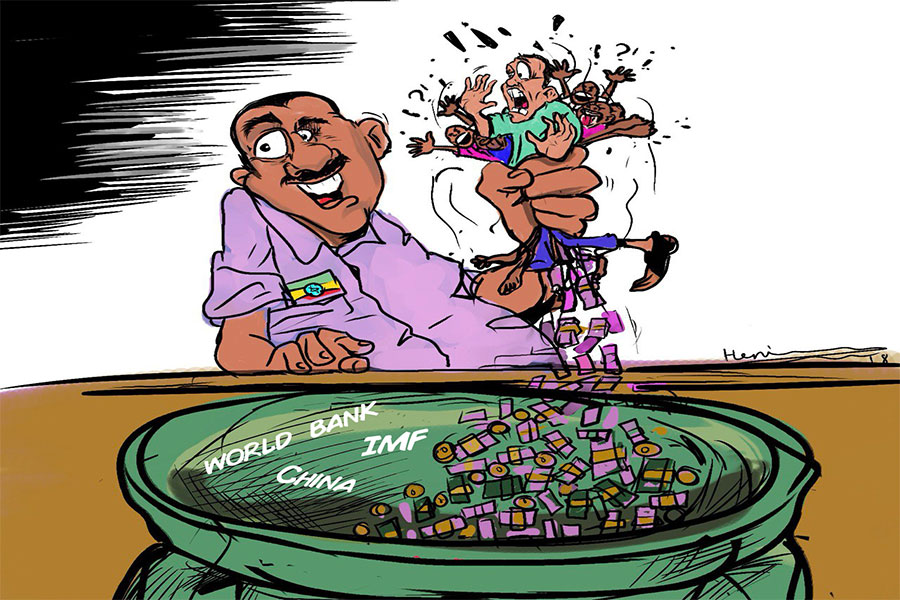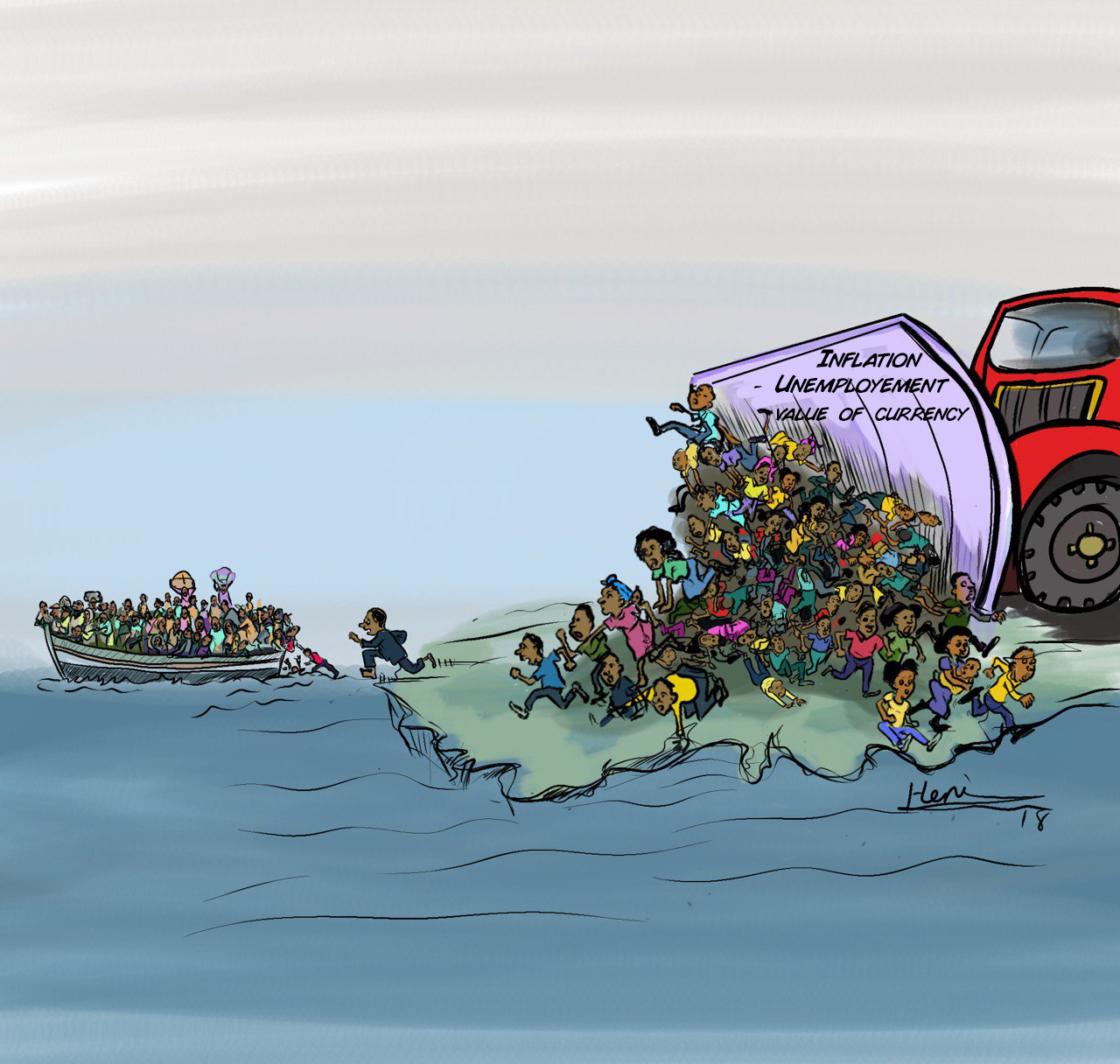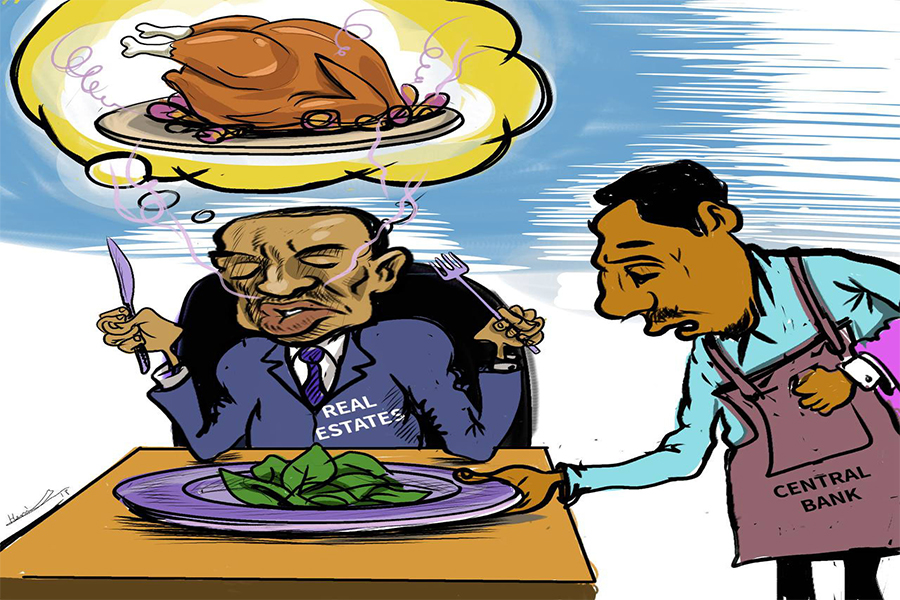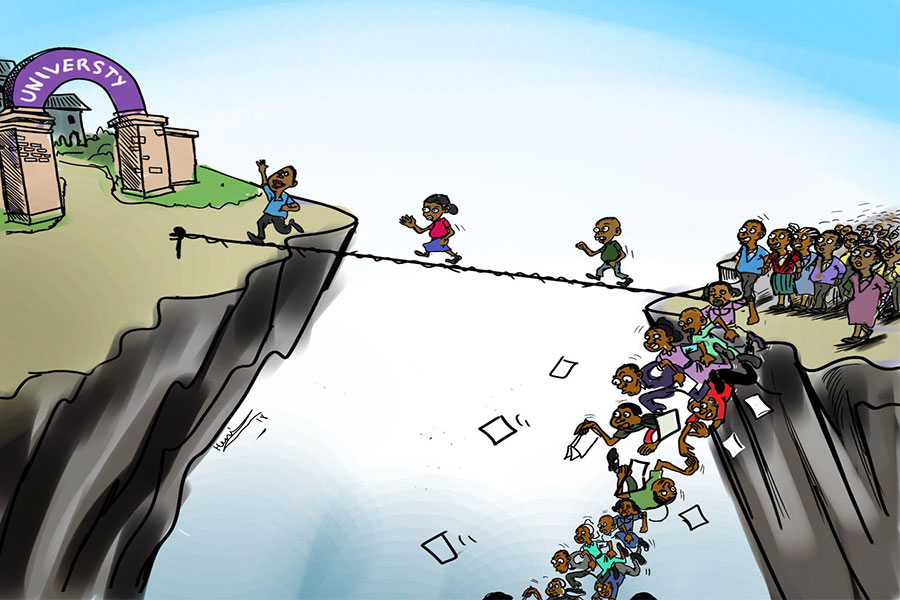
Photo Gallery | 175469 Views | May 06,2019
Aug 30 , 2025.
The foreign-exchange market spent last week's trading days walking a tightrope between the Central Bank's policy drives and commercial imperatives. For most private banks, including Awash, Dashen, Nib, Wegagen, Bunna and Hibret, the show was almost mechanical. They posted buying and selling quotes that inched along by fractions of a cent, preserving the National Bank of Ethiopia’s (NBE) mandated two percent retail spread.
In an arena usually ruled by caution, such predictability remains the policy's point.
But the Central Bank itself, which publishes benchmark rates, often breaks the script. On August 25 and 26, 2025, it posted a spread of 0.04pc. A day later, the gap vanished altogether, with the buying and selling rates (142.8342 Br to the dollar on one side, 142.8343 Br on the other) being effectively identical. By August 29 and 30, the spread had widened to 0.50pc, still only a quarter of the ceiling.
Away from that oddity that has become the rule rather than the exception, the forex market’s top end belonged to Oromia Bank. It routinely paid the highest price for dollars and charged the stiffest prices on sales. The peak landed on August 29 and 30, when Oromia Bank bid 141.85 Br and asked 144.68 Br. Zamzam and Amhara banks also pressed the upper band, keeping offers north of 142.27 Br. Their strategy looked simple. Outbid the pack to pull remittances and traveller cash onto their books.
Global Bank (Ethiopia) stood at the opposite extreme. Its quotes fell as low as 136.39 on the bid and about 139.12 on the ask, well under the industry’s mid-140s ceiling and miles beneath Oromia Bank’s perch. Such conservative pricing typically indicates a liquidity squeeze or a decision to limit foreign-currency exposure until fresh supply arrives. Either way, Global Bank chose defence while Oromia Bank, Zamzam and Amhara Bank played offence.
Several banks drifted upward in gentle increments. Addis Bank started the week by buying at 138.96 Br and selling at 141.74 Br, then finished at 139.33 Br and 142.12 Br. Bunna and Dashen banks edged higher midweek, letting their selling quotes toy with 142 by August 30. The moves were small but consistent with an underlying view that the Brewed Buck will weaken; locking in the Green Buck today is cheaper than chasing it tomorrow.
Strip out the outliers, and the story looks almost flat. Across six days, the typical buying rate ran between 138.9 Br and 139.3 Br, while the typical selling rate ranged between 141.7 Br and 142.1 Br. The textbook spread of two percent held for everyone except the Central Bank. The steadiness implies a carefully managed market, one where treasurers watch the central benchmark and then shade around it, wary of standing too far from the herd.
Yet, averages can hide more than they reveal. At one end, Oromia Bank’s 141.84 Br bid sat 3.14 Br above the industry mean and 0.45 Br over the Central Bank’s own weighted figure. At the other, Global Bank’s 136.6 Br bid dragged the floor lower than the state-owned Commercial Bank of Ethiopia (CBE), which had long held the most conservative posture. The range between the highest and lowest public bids thus stretched beyond five Birr, an unusually wide disparity for a market that claims uniformity.
CBE itself adjusted sharply. It lifted its buying and selling rates by 2.44 Br compared with the prior week, narrowing the gap to the weighted average and ceding the lower boundary to Global Bank. This realignment mattered because CBE’s heft often anchors expectations. Once it chased the market up, private lenders lost cover for quoting far above the norm. The peer group converged, extremes thinned, and the average price eased.
By Saturday, August 30, industrial averages on buy and sell had inched down. The pullback was less about fundamentals than about the disappearance of the week’s loftiest offers. Quotes above 142 Br practically vanished. The distribution tightened into a corridor defined by the high-130s on the bid and the low to mid-140s on the ask. For retail customers, this should mean a better chance of transacting near the mean. For banks, it could threaten slimmer trading income unless volumes jumped or balance-sheet turnover sped up.
The pattern resembled a gentle plateau. Early in the stretch, a handful of banks still tested higher ground. By midweek, interbank and corporate flows forced more disciplined pricing. By week’s end, averages had edged lower, and the spread of quotes shrank.
With spreads flat for most players and averages off their recent highs, the Brewed Buck looked stable. But that calm rests on conditions that can change quickly. If the dollar supply tightens, as forex market history often shows, the upper tail of quotes may return. Banks positioned near the ceiling would climb again, the average would rise, and customers would feel the pinch. So much will depend on whether Oromia Bank keeps its premium bid, whether CBE’s shift triggers more crowding around the weighted benchmark, and whether the Central Bank’s published spread reverts to the two percent norm.
For households and importers, the immediate takeaway is slightly lower costs than a week ago, with fewer punitive offers at the top. For bankers, the lesson is that margins compress when the herd packs close. For the regulator, last week’s drift lower should be welcomed but inconclusive. Sustainable relief requires a steadier flow of foreign currency, not merely the fading of outliers.
The Brewed Buck thus enjoyed a controlled respite last week rather than a rally. The official exchange rate eased at the edges, and the market’s upper range cooled. Price dispersion narrowed, and the centre of gravity slipped a notch. However, the underlying push and pull remain. A fresh surge in remittances could keep the distribution tight, while a sudden import payment crunch could blow it wide. If Oromia Bank keeps bidding aggressively, rivals may follow or lose share.
Last week’s pattern of steadfast peers, a bold outlier and an enigmatic regulator delivered enough intrigue to keep treasurers alert. The Brewed Buck may not be sprinting anywhere, but every small step on the ladder tells a story about liquidity, strategy and the silent negotiations that shape access to hard currency.
PUBLISHED ON
Aug 30,2025 [ VOL
26 , NO
1322]

Photo Gallery | 175469 Views | May 06,2019

Photo Gallery | 165690 Views | Apr 26,2019

Photo Gallery | 156034 Views | Oct 06,2021

My Opinion | 136819 Views | Aug 14,2021

Oct 18 , 2025
The political establishment, notably the ruling party and its top brass, has become p...

Oct 11 , 2025
Ladislas Farago, a roving Associated Press (AP) correspondent, arrived in Ethiopia in...

Oct 4 , 2025
Eyob Tekalegn (PhD) had been in the Governor's chair for only weeks when, on Septembe...

Sep 27 , 2025
Four years into an experiment with “shock therapy” in education, the national moo...